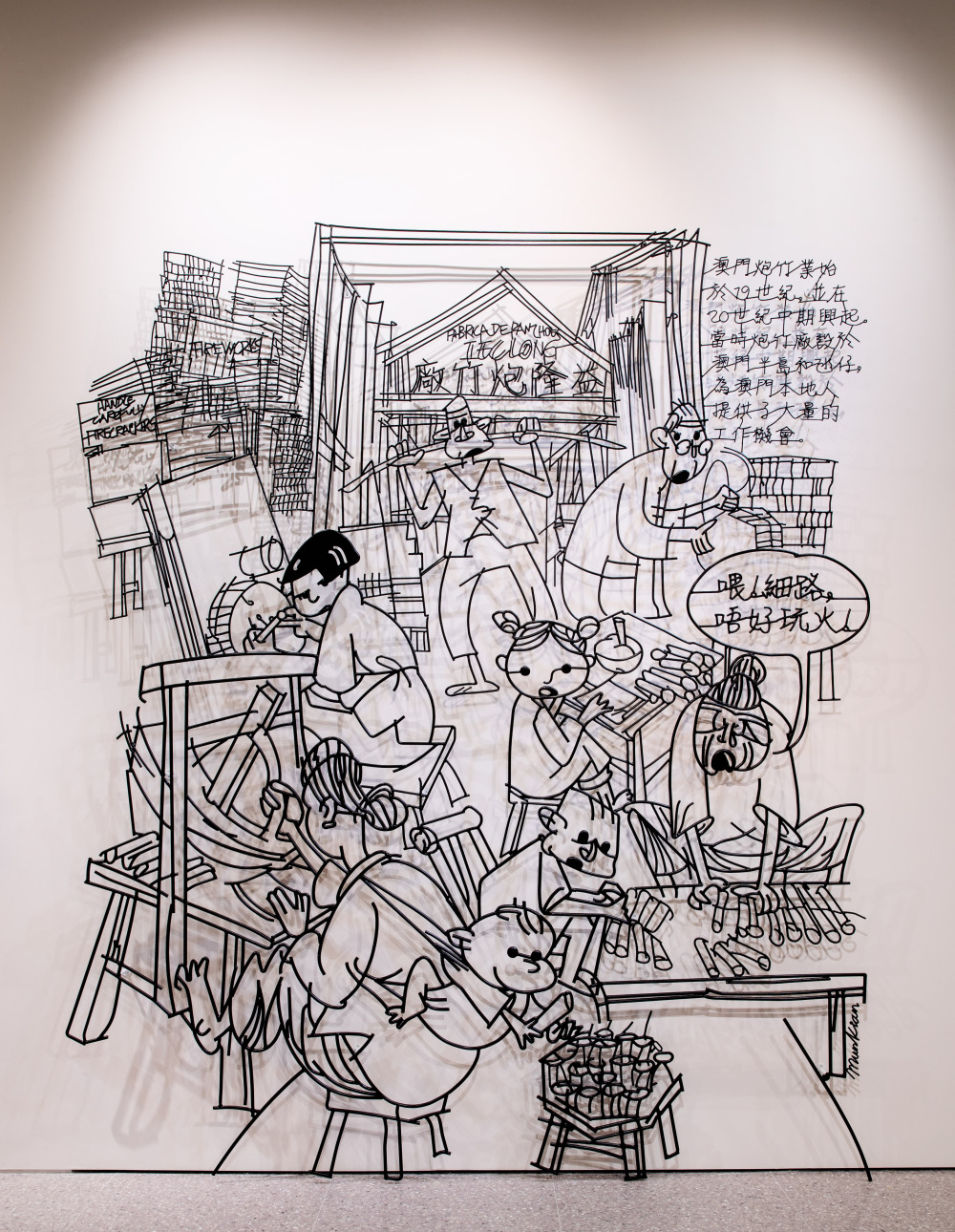

Special Exhibition of “Art Macao: Macao International Art Biennale 2021”
03
Drunken Dragon
- MEDIA
- Welded Steel
- DIMENSION
- 3600H x 4000W
- YEAR
- 2021
CHILDREN'S AUDIO GUIDE
Children’s Audio Guide is only available in Cantonese & Mandarin
LEAL SENADO BUILDING:
THE INTERSECTION BETWEEN EAST AND WEST
Located in the heart of Macao, the Leal Senado Building overlooks the Senado Square.
A Chinese-style pavilion used to stand on the site of the Leal Senado Building, and it was where officials from China and Portugal met to conduct their government affairs. In 1784, the pavilion was purchased by the Portuguese when the Leal Senado Building was built on the site, and became Macao’s original municipal chamber, a function it maintains to the present.
While Leal Senado had undergone restoration several times, it has maintained by-and-large the same look despite the various renovations throughout the early 1900s, maintaining its distinctive southern European style. It currently houses a gallery on the ground floor, a public library with a collection of old foreign books, and an auditorium with a chapel. The building was officially included in the UNESCO World Heritage Site Historic Centre of Macao in 2005.
Near to the Leal Senado Building is Kuan Tai Temple, or Sam Kai Vui Kun in Chinese, which literally means “the meeting place of three streets”. The temple was originally used as a meeting venue for business representatives from the three nearby streets, namely, Rua dos Mercadores, Rua das Estalagens and Rua dos Ervários, the area being the old Chinese Bazaar area in the early days. After Sam Kai Vui Kun ceased to be the meeting place for business organizations in the early 20th century, the building began to function exclusively as a place of worship for Kuan Tai, the deity being the epitome of loyalty and righteousness.
Traditionally, “Festival of the Drunken Dragon” is held annually in front of Kuan Tai Temple, on the eighth day of the fourth month of the Chinese lunar calendar. During the festival, a wooden dragon was made to dance on the incense burner table to pray for blessings. The tradition of the drunken dragon dance celebrated by Macao fishmongers evolved into an annual festival, jointly celebrated by all fishmonger associations in Macao, and became a unique and influential traditional folk festival celebrated by people from all walks of life. The festival features a variety of activities, including the “Drunken Dragon Parade” and the sharing of “longevity rice”, as well as the “drunken dragon dance” and “lion dance".
Included as part of the Macao’s Intangible Cultural Heritage, the Festival of the Drunken Dragon of Macao was inscribed on the Third National List of Intangible Cultural Heritage in May 2011.










